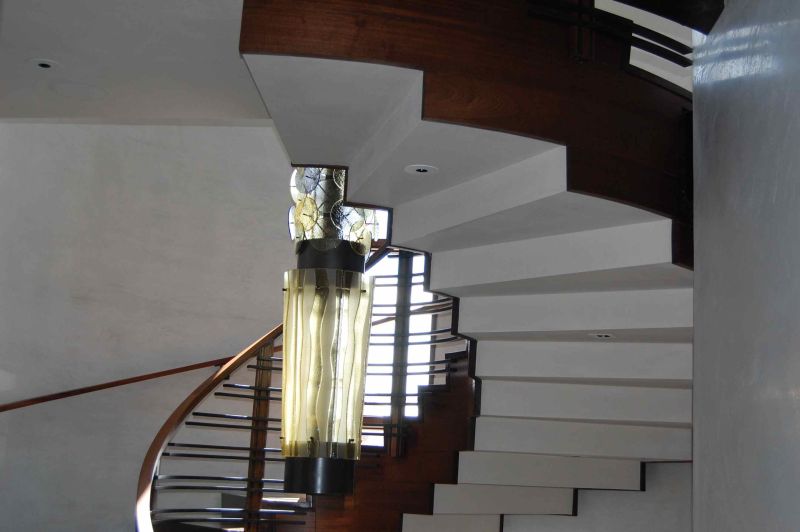Question
What is the best way to glue up stock for curved stain grade moldings?
Forum Responses
(Architectural Woodworking Forum)
From contributor P:
Sequence cut laminate. Basically, resaw all the lams from the same piece of thick stock. Widebelt them to thickness and glue them up in the exact sequence you cut them. Nearly invisible.
Also, use a band saw if possible to cut the laminates, which will lessen the missing part of the picture when gluing the pieces back together in sequenced order. My resaw style band saw takes a miserly .050" kerf. I lose another .030" or so to the planer to remove saw marks from each strip.
As contributor P said, if you glue the pieces up in the order they were sawn from the board, the laminations are hard to see, especially when the face of the molding has a profile.
I have a feeling you may be asking about the rest of the procedure. Make a female concave form from inexpensive sheet goods. Build it up to a minimum of your requirements with ribs if necessary. Make its radius match the outside radius of your molding. Build a male convex form to the female form radius minus the molding's added dimension. Place glue on each laminate quickly and clamp between the two halves of the form until the glue is hard.
I have had the best luck using one form that is convex, and stretch forming the lams over it. I use a caul strip of plywood or something to distribute the clamp pressure. Clamping from the center out both directions. What do others do?
I have had great luck with plastic resin glues too, but you have to keep the glue joint tight or you see them. Yellow glue is near invisible, but spring back can be a problem on stressed lams.
I use a lot of different methods, actually. Like you, I typically build a solid form or caul for the convex part of the radius. I also always include space for some 1/8" thick bendable material like masonite on both the inside and outside of the laminates... I have noticed that the very inner and outer laminates always want to have gaps, so I trick them by making the inner and outermost laminates the unglued bendable masonite or similar material.
For the concave side of the work, I usually use split or segmented cauls. These secondary cauls are typically beefier than what you describe (sounds like you use maybe 1/4" thick plywood?), because I have learned that to truly distribute the clamp pressure, you need something with mass and stiffness in a lot of cases when it comes to cauls.
It really boils down to the size of the piece to me. If I can get enough clamps on it without beefy cauls to have non-gapping joints, I won't use anything other than what you do. If I am gluing up something that has a depth or width that exceeds the throat of my clamps, cauls must be used on both sides of the radius to insure joint quality.
